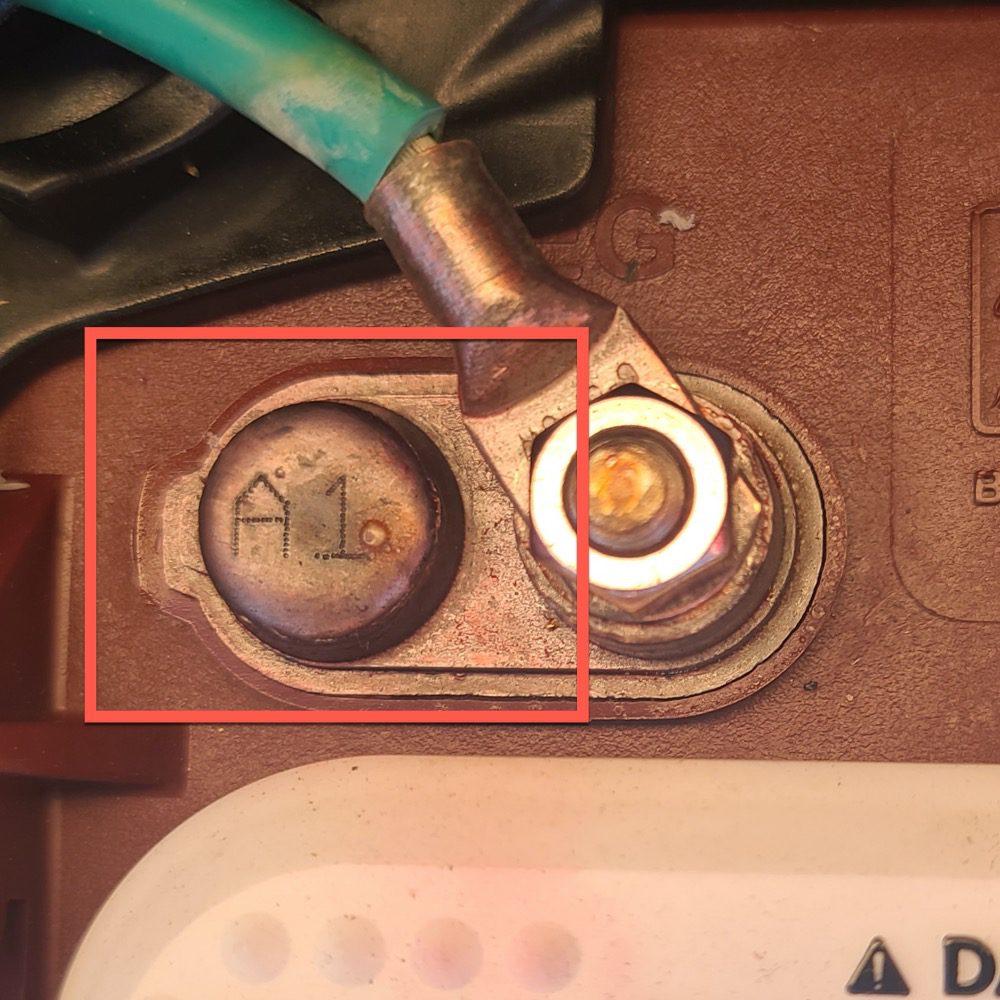How old is your golf cart battery?
The below information will help you determine your golf cart battery age.
- Your golf cart battery age is located based on the manufacturer and labeled by a letter, then a number.
- The letter corresponds with the month the battery came out of production
- The consecutive number is one digit and stands for the production year.
| A | January |
|
B |
February |
| C | March |
| D | April |
| E | May |
| F | June |
| G | July |
| H | August |
| I | September |
| J | October |
| K | November |
| L | December |
Golf Cart Battery Date Code Examples
 |
 |
 |
| B1 - February 2021 | A1 - January 2021 | H9 - September 2019 |
Golf Cart Battery FAQ
When should I water my batteries?
Brand new batteries will use very little water at first, but with average use, will need water about every other month. As the battery gets older, it takes longer for it to reach a full charge, thus using more water more frequently. If you play 5 times a week, you should check the water level every four weeks.
What is the proper electrolyte (water) level?
Liquid levels should be just below the bottom of the vent/fill well. We suggest ¼” below the well (cylinder wall), or, ¾” above the top of the plates.

How do I clean my batteries correctly?
We recommend you use a solution of baking soda and water. We find that mixing one gallon of water to a 1/3 box of baking soda will neutralize acid residue from the tops of the batteries and can be applied directly to the terminals as well. Once the acid and corrosion are neutralized, the batteries can be rinsed off with a low-pressure water hose. This process should be done at least every six months, or when there is any visible corrosion. The vehicle should be taken out in the street gutter to keep your garage floor and drive-way from staining. This particular job may be best to have a technician (experts) do at Prestige Golf Cars. Corroded terminals are the number one cause of golf car failure.
Do you ever add acid to a battery?
Under normal operating conditions, you never need to add acid. Only distilled, de ionized, or approved water should be added to achieve the recommended levels mentioned above. When a battery is shipped in a dry state or accidental spillage occurs, electrolyte should be added to the battery. Once filled, a battery should only need water added periodically.
Can batteries freeze?
In a partially discharged state, the electrolyte in a lead acid battery may freeze if the temperature reaches approximately –16.0 degrees F. The electrolyte in a fully charged battery freezes at approximately –92.0 degrees F.
What is the proper torque value for my battery connections?
Depending on the type of post and or the manufacturer of the battery, we recommend between 65 to 70-inch lbs. Keep terminals tight, as they do loosen up after 1 year or so.
What are common mistakes made by lead acid battery owners?
Undercharging. Leaving the golf car inactive for over 2 months will reduce the battery life. Continually operating the battery in a partial state of charge or storing the battery in a discharged state results in the formation of lead sulfate compounds on the plates. This condition is known as Sulfating. Sulfating reduces the battery’s performance and may cause premature battery failure.
Overcharging
Continuous over-charging causes accelerated corrosion of the positive plates, excessive water consumption, and in some cases, damaging temperatures within a lead acid battery. Deep cycle batteries should be charged after each discharge of more than 50% of the batteries rated capacity, and/or after prolonged storage of 30 days or more.
Under-watering
In a deep cycle lead acid battery, water is lost during the charging process. If the electrolyte level drops below the top of the plates, irreparable damage may occur, as the plates will get hot, warp, and crack leaving the battery weak and inefficient. Water levels should be checked and maintained routinely.
Over-watering
Excessive watering of a battery results in additional dilution of the electrolyte, resulting in reduced battery performance. Additionally, watering the battery before charging may result in electrolyte overflow and unnecessary maintenance, not to mention the mess that will result on the garage floor!
How do I tell if a battery is bad?
The first indication of a battery problem is reduced performance. Allow the battery to stand on open-circuit for about one hour. Measure the voltage of each battery in the system. If the battery voltage spread exceeds 1.5 volts for a 6-volt battery a problem is indicated. Battery voltage alone does not confirm a problem. When the voltage spread indicates a problem, confirmation is accomplished by taking electrolyte specific gravity readings by using a hydrometer. If the specific gravity readings show a spread greater than .25 (25 points), corrective action should be taken. The appropriate corrective action is to give the batteries an equalize charge.
